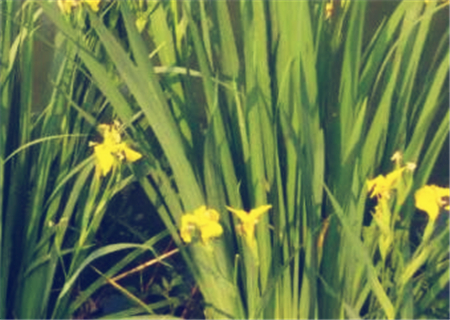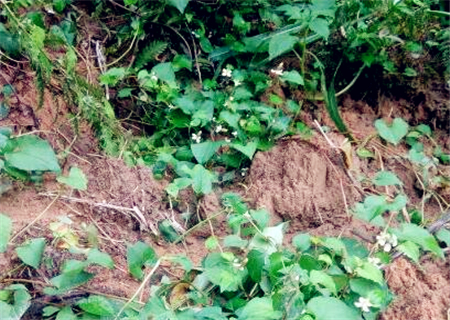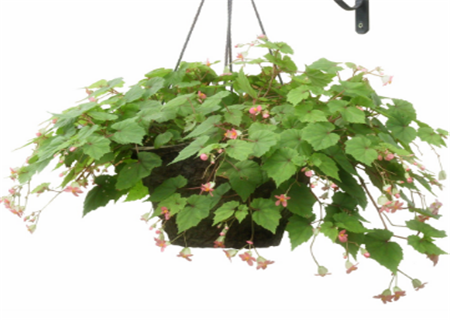How does traditional Chinese medicine calamus grow with soil? Can I get hydroponic culture? What if the leaves turn yellow?
Acorus calamus is also called white calamus and Tibetan calamus. Born on the edge of a swamp, stream or paddy field. It is a spiritual grass that can prevent epidemic disease and exorcise evil spirits in traditional Chinese culture. There is a custom of inserting gladiolus leaves and moxa bundles under the eaves of the Dragon Boat Festival. So more and more people begin to plant calamus, so how to cultivate calamus with soil? Can I get hydroponic culture? What if the leaves turn yellow?

First, how to cultivate calamus?
1. Mode of reproduction
When cultivating calamus at ordinary times, we must understand its mode of reproduction. It can reproduce by dividing beads. This way of reproduction should be carried out every year from September to October. When breeding, you can take out the big spiders and remove the withered and yellow old leaves. Then divide the plant into several, and then plant the pig and pour enough water in the flowerpot.
2. Soil
Acorus calamus is a kind of wet plant growing at the edge of the water. Usually, when planting at home, we must choose the culture soil with good drainage, and keep the basin soil moist. In addition, the vitality of this plant is very strong and grows very fast. It is necessary to change the basin in time during the breeding period, and it is most appropriate to change the basin once a year, and the time to change the basin should be in the spring of every year.
3. Fertilization method
Acorus calamus has strong adaptability in the growing season, so it can be managed extensively. Acorus likes nitrogen fertilizer, rotten bean cake water fertilization is the best, can avoid burning seedlings, nitrogen fertilizer can promote its growth, late need to apply topdressing 2-3 times, and combined with fertilization to weed. Nitrogen fertilizer should be the main fertilizer in the early growth stage of Acorus calamus, and phosphorus and potassium fertilizer should be applied before heading and flowering to enhance the immunity of Acorus calamus. Pay attention to each fertilization must be buried in the soil surface of about 5 cm, be careful not to be too close to the root, to avoid burning roots. Clean up the dead branches and leaves on the ground before overwintering, and be clear about the pathogens and pathogens of diseases and insect pests.
4. Mode of reproduction
Sowing seeds
The ripe red berries collected will be cleaned and sowed indoors in autumn to keep moist soil or shallow water. Under the condition of about 20 ℃, the berries will germinate in early spring, and then separated and cultured. When the seedlings grow healthily, they can be transplanted and planted.
Ramet
Dig out the underground stem with a shovel in the early spring (around the Qingming Festival) or during the growing period, wash it clean, remove the old root, stem and withered leaves and stems, and then cut the underground stem into several blocks with a sharp knife, each retaining 3-4 new buds for propagation. Separate planting in the growing period, dig up the roots of the plant, wash them, remove the roots of 2-stroke-3, and then divide them into lumps, and keep young leaves, buds and new roots in the ramet.
Can calamus be cultured in water?
Calamus this kind of plant essentially likes shade and wet, from this point, water culture is better than mud planting, indoor ornamental is mainly water culture, as long as the clear water is not dried up, the life span can be up to several decades.
Hydroponic method
The calamus with large old roots is suitable for hydroponic culture, and the old roots are higher than the mud and meandering like the dragon walker is better. The scattered small plants of calamus can be grouped into clusters, and then wrapped with palm skin and placed in the water basin, but the roots of small plants of calamus are very short, and they can be grouped with enamelled wire. It is necessary to pay attention not to hurt the old roots, and then circle them with enamelled wire.
According to personal preference and the size of the plant, you can choose a watertight flower organ of medium depth, wash the stem segment of calamus, trim off the old root and overgrown root, soak in potassium permanganate solution for 2 hours for sterilization and disinfection, fill the pebbles while fixing the plant in the basin, the horizontal plane can touch the root, do not soak the leaves, and finally put it in a place with sufficient light, so as not to make sunlight exposure.
Third, what if the leaves of calamus turn yellow?
1. Water yellow
Acorus calamus likes water, generally watering does not affect the growth of Acorus calamus, but if the pot used has no bottom hole, or the plant material is impervious, and the stagnant water in the basin becomes waterlogged, resulting in soil hypoxia, the roots rot and the leaves turn yellow. In addition, the southern Hui days, plum rainy days should also pay attention to, this kind of weather is overcast and rainy, air humidity is great, transpiration is reduced, calamus is also prone to yellow leaves. In case of water yellow, first of all, we should reduce the watering frequency and water quantity, put the calamus in the ventilated place, and replace the plant material as soon as possible.
2. Dry yellow
In general, we raise calamus in order to be beautiful, using more small pots and less plant material in small space. if the weather is sunny and hot, drought will occur if it is not watered for two or three days. For calamus, this is your own life. I'll show you the yellow face right away. First of all, dry yellow should be watered as soon as possible, but at this time the physiological function of Acorus calamus has not been restored, it is not easy to water more, just keep the soil moist, let calamus gradually adapt.
3. Dry yellow
Unlike dry yellow, dry yellow is caused by low air humidity, which is easy to occur in hot summer or indoor rooms with heating in the north. Due to low air humidity and strong transpiration, Acorus calamus is easy to scorch the tip of yellow leaves. Dry yellow should first increase the amount of water, and then you can consider making a water basin or sand basin. Put a brick at the bottom of the basin, the water should not pass through the brick, and the calamus pot is placed on the brick to create a small environment and increase air humidity. If it is summer, pay attention to shade, or put calamus in a cool and ventilated place.
4. Burning yellow
Acorus calamus is a shade-loving plant, generally put in a place with scattered light, you can properly bask in the sun in winter and spring, but if you encounter strong direct sunlight, the scorched tip of yellow leaves will appear, and you should pay attention to putting it back in a cool and ventilated place.
5. Alkali yellow
Calamus likes a weakly acidic growth environment, if the water quality is alkaline, or long-term sitting basin, saline-alkali accumulation in the basin soil, then the leaves naturally from green to yellow, usually try to use clean water, do not sit for a long time. If the return of alkali is serious, you can neutralize it with ferrous sulfate solution, but considering the actual situation, I think it is easier to change the soil and put it on the basin directly.
6. Frozen yellow
Calamus likes to grow at 15-25 degrees, but it grows slowly below 10 degrees. Below 5 degrees, it should be reclaimed indoors or added warm facilities. Some people say that zero or even below zero calamus may not be all right, but why take that risk? For example, last winter, many people's calamus was frozen. If there is frozen yellow, the yellow leaves should be removed as soon as possible and put into a warm environment in order to regenerate the roots and leaves.
Acorus calamus leaves yellowing, or even wilting phenomenon, we must first find its cause. Once we have found the cause, we should prescribe the right medicine in time, so that the leaves of calamus will change from yellow to green as soon as possible. And the cause of calamus leaves yellowing is not only the same, so we should take it seriously, serious investigation, in order to solve this problem perfectly.
Time: 2019-04-08 Click:
- Prev

What are the efficacy, functions and taboos of Houttuynia cordata Thunb (folded ear root)? Can treat hemorrhoids and rhinitis
Houttuynia cordata Thunb is a Chinese herbal medicine, also known as folded ear root. Houttuynia cordata is generally harvested in summer and grows on the edge of the field and on both sides of the road. It has the effect of clearing away heat and detoxification, and it is generally used to make tea in the hometown. So what are the effects, functions and taboos of Houttuynia cordata? Can you treat hemorrhoids, rhinitis and gynecological diseases?
- Next

How to maintain hydroponic hanging orchids? What are the breeding methods and matters needing attention?
Hanging orchid is a more common plant, also known as weeping pot grass, hanging orchid, fishing orchid, bluegrass, folding crane orchid, air guard. The plant has the effect of purifying air, and the whole plant can be used as medicine. So how to maintain the hydroponic orchid in life? What are the breeding methods and matters needing attention of hanging orchids? How to maintain hydroponic hanging orchids?
Related
- Fuxing push coffee new agricultural production and marketing class: lack of small-scale processing plants
- Jujube rice field leisure farm deep ploughing Yilan for five years to create a space for organic food and play
- Nongyu Farm-A trial of organic papaya for brave women with advanced technology
- Four points for attention in the prevention and control of diseases and insect pests of edible fungi
- How to add nutrient solution to Edible Fungi
- Is there any good way to control edible fungus mites?
- Open Inoculation Technology of Edible Fungi
- Is there any clever way to use fertilizer for edible fungus in winter?
- What agents are used to kill the pathogens of edible fungi in the mushroom shed?
- Rapid drying of Edible Fungi

